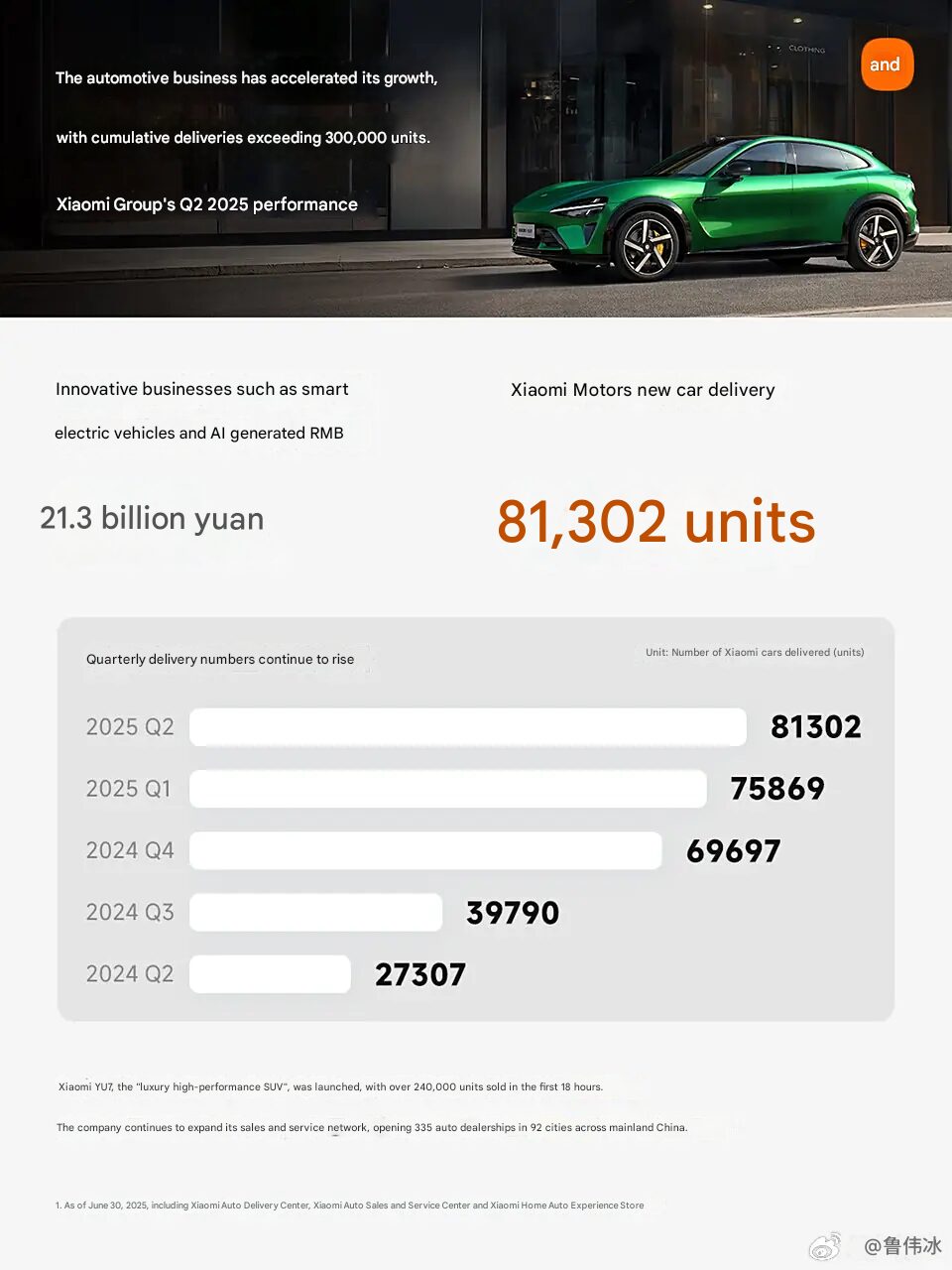Xiaomi’s ambitions for the European electric vehicle market are clear: the company is targeting a full-scale launch by 2027. President Lu Weibing made it official just as Xiaomi reported standout Q2 numbers—116 billion yuan in revenue ($15.9 billion USD), marking a 30.5% year-over-year increase and setting an all-time high for the company.
Vehicle deliveries are also picking up serious momentum. Xiaomi rolled out 81,302 cars this quarter—nearly triple last year’s figure.
EV Division Accelerates Toward Profit
The growth in Xiaomi’s automotive division is hard to ignore. Revenue from electric vehicles jumped 233.9% year-over-year, reaching 21.3 billion yuan ($2.92 billion USD). Operating losses narrowed sharply to 300 million yuan ($41.2 million USD), a clear signal that the division is moving closer to profitability. Lu Weibing projects the auto business will turn profitable in the second half of 2026, with positive quarters possible even sooner.
The company’s investment in EVs is substantial—over 30 billion yuan in the past three years—but leadership remains confident in the path to profitability. The YU 7 series is building on the SU7’s momentum, and management views it as another major win for Xiaomi’s auto ambitions.
Smartphone Division Sets Sights on 200 Million Annual Units
Smartphones are still a core pillar for Xiaomi. The division posted Q2 revenue of 45.52 billion yuan ($6.25 billion USD) with shipments of 42.4 million units, extending its streak of year-over-year growth to eight consecutive quarters. Lu Weibing is setting the bar high, aiming for global annual shipments of 200 million units within three to five years.
The numbers back up Xiaomi’s confidence:
- 24.7% market share in China’s 4,000-5,000 yuan premium segment (first place)
- 15.4% share in the 5,000-6,000 yuan range, up 6.5 points
- Top-three smartphone brand in 60 countries and regions
- Strong presence across Europe, Southeast Asia, the Middle East, and Latin America
Investment in Chips and R&D
Xiaomi’s in-house XRING O1 chip has reached mass production, and the company is doubling down on research to drive future innovation. Q2 R&D spending hit 7.76 billion yuan ($1.07 billion USD)—a 41.2% jump year-over-year. Xiaomi now employs 22,641 R&D professionals as of June 2025 and is targeting a total of 30 billion yuan in R&D investment for the year. The chip division is a key piece of Xiaomi’s strategy to vertically integrate and differentiate its product lines.
Strategic Approach: Growth Without Price Wars
Lu Weibing is clear: Xiaomi is not interested in destructive price wars, particularly in the home appliances sector, where revenue surged 66.2% year-over-year. The company is targeting over 30% total revenue growth for 2025, driven by strong performance in all business lines—including an IoT ecosystem that now boasts nearly a billion connected devices.
Source: IT Home


 Emir Bardakçı
Emir Bardakçı


